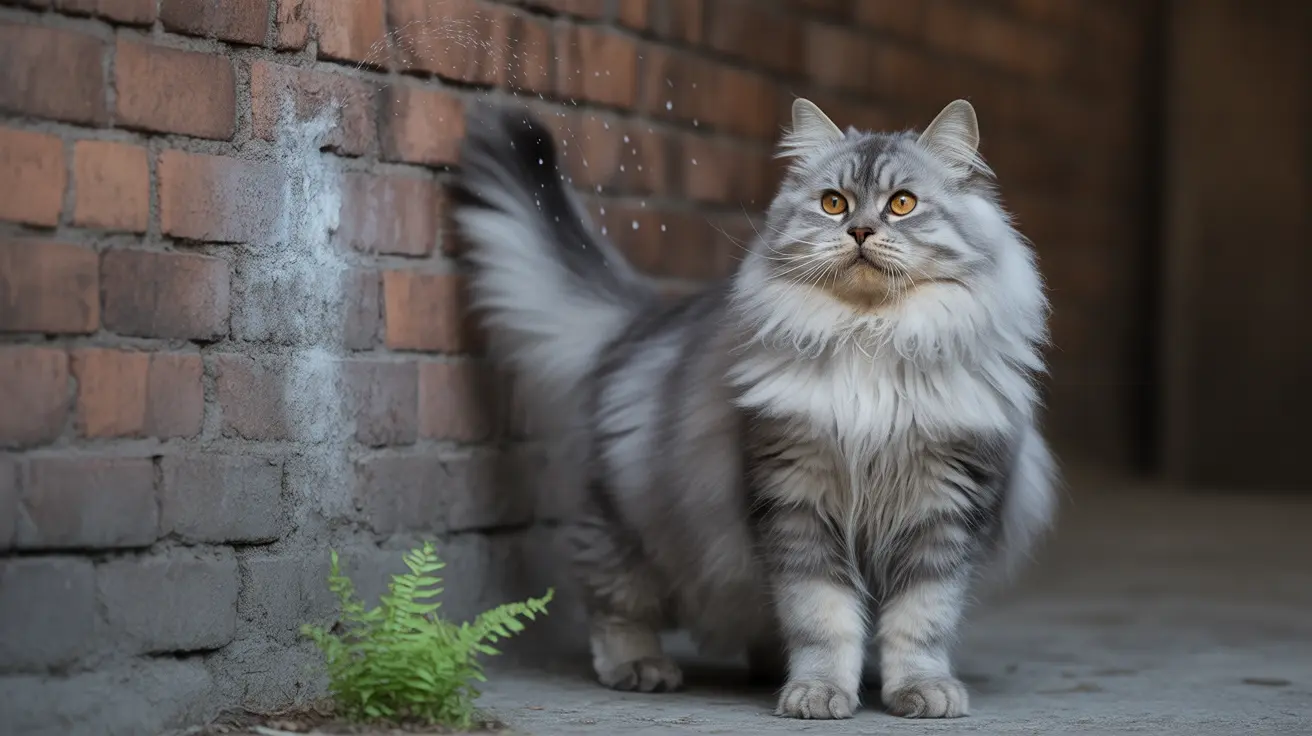If you're a cat owner or considering adopting a feline friend, you might wonder: do all cats spray? The short answer is no - while all cats are physically capable of spraying, most domestic cats never exhibit this behavior, especially when spayed or neutered early in life.
Let's explore the facts about cat spraying, including which cats are most likely to spray, why they do it, and how to prevent this sometimes problematic behavior.
Understanding Cat Spraying Behavior
Cat spraying is distinctly different from normal urination. When a cat sprays, they stand upright and release a small amount of urine on vertical surfaces, leaving their scent mark. This behavior serves as a form of communication in the feline world, conveying messages about territory, mating availability, and stress levels.
Which Cats Are Most Likely to Spray?
Not all cats will engage in spraying behavior. The most common sprayers are:
- Unneutered male cats (most frequent)
- Unspayed female cats (especially when in heat)
- Cats in multi-cat households
- Cats experiencing territorial stress
- Cats facing environmental changes
The Impact of Spaying and Neutering
One of the most effective ways to prevent spraying is through early spaying or neutering. Statistics show that approximately 95% of cats will either stop spraying or never start after being fixed. Of the cats that have been sterilized:
- Only about 10% of neutered males continue to spray
- Roughly 5% of spayed females may still exhibit spraying behavior
Common Triggers for Cat Spraying
Even in fixed cats, certain situations can trigger spraying behavior:
- Introduction of new pets or family members
- Moving to a new home
- Changes in routine or environment
- Presence of outdoor cats visible through windows
- Conflict with other household cats
- Medical issues or discomfort
Prevention and Management Strategies
To minimize the likelihood of spraying, consider these preventive measures:
- Spay or neuter before 6 months of age
- Maintain a consistent daily routine
- Provide multiple litter boxes in multi-cat homes
- Use pheromone diffusers to reduce stress
- Clean any marked areas thoroughly with enzymatic cleaners
- Create a calm, enriched environment with plenty of resources
Frequently Asked Questions
Do all cats spray urine, or is this behavior limited to certain cats?
No, not all cats spray urine. While all cats have the physical ability to spray, most domestic cats never do, especially if they're spayed or neutered early in life. Unneutered male cats are the most likely to exhibit this behavior.
Why are male cats more likely to spray than female cats?
Male cats spray more frequently due to higher testosterone levels, which drive territorial and mating behaviors. Unneutered males use spraying to mark territory and attract mates, making them the most prolific sprayers among all cats.
How does neutering or spaying affect a cat's likelihood to spray?
Neutering or spaying dramatically reduces spraying behavior, with about 95% of cats showing a significant decrease after the procedure. Early sterilization (before 6 months) is most effective at preventing the behavior from developing.
What are the main reasons cats spray indoors, and how can I stop it?
Cats typically spray indoors due to stress, territorial marking, or medical issues. To stop it, ensure your cat is fixed, reduce environmental stress, provide adequate resources, and clean marked areas thoroughly. Consult a vet to rule out medical causes.
How can I tell the difference between spraying and normal urination?
Spraying involves a cat backing up to a vertical surface, tail straight up and quivering, releasing a small amount of urine. Normal urination occurs in a squatting position on horizontal surfaces, with larger amounts of urine deposited.
Understanding cat spraying behavior is crucial for maintaining a harmonious household with your feline companion. While not all cats spray, knowing the triggers and prevention methods can help you address or avoid this behavior effectively.






